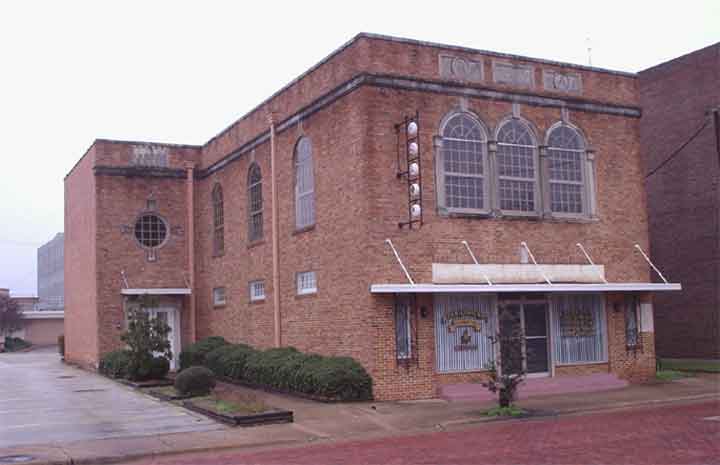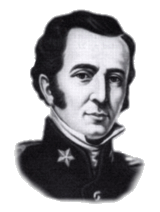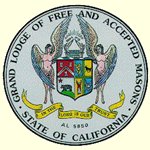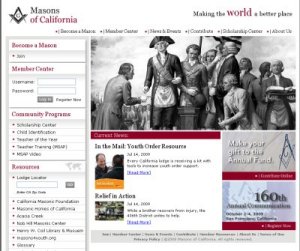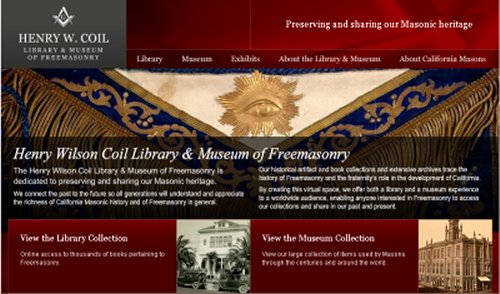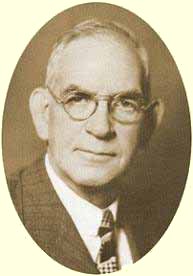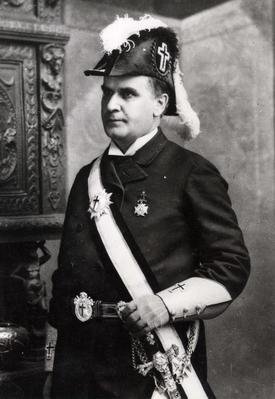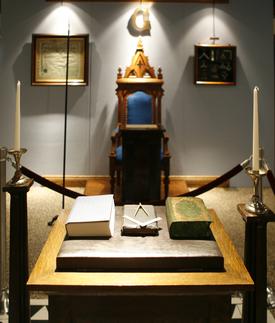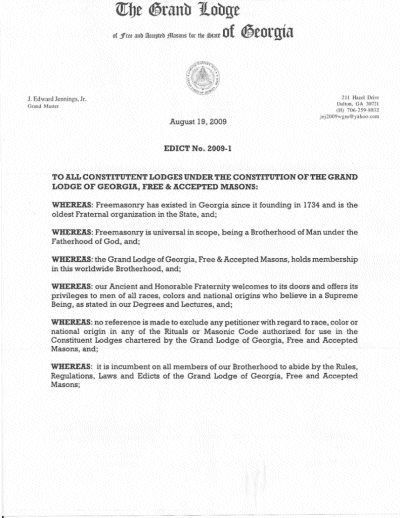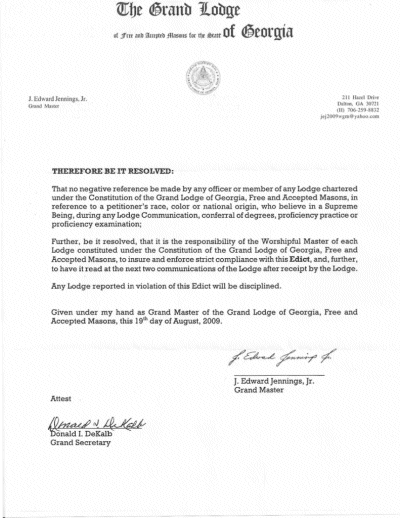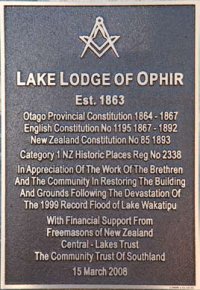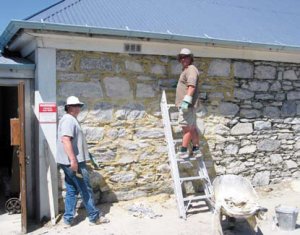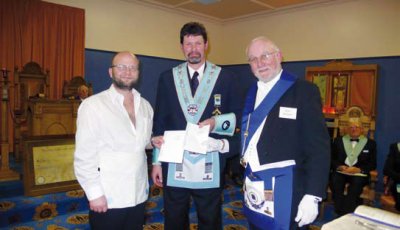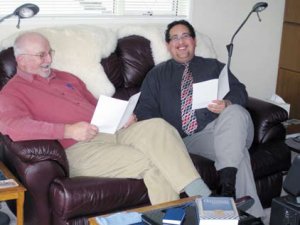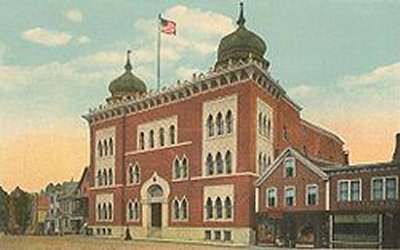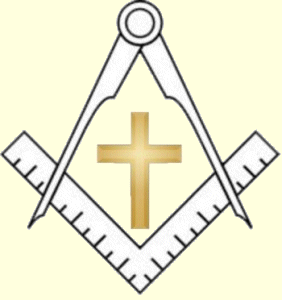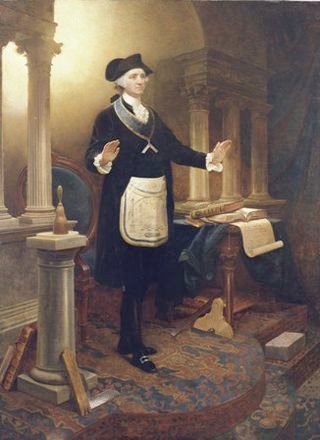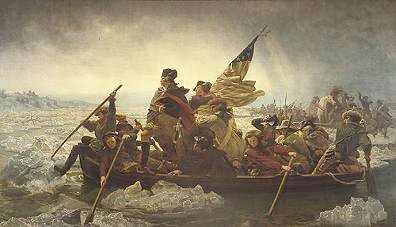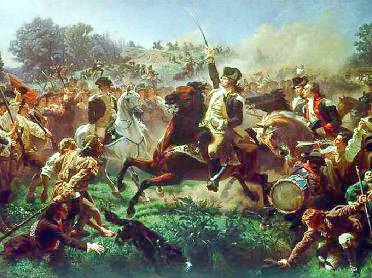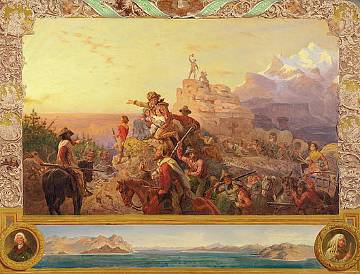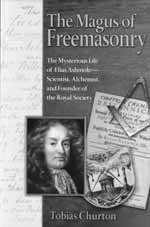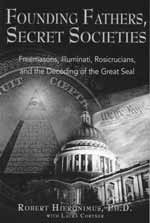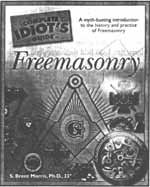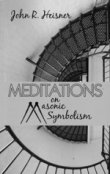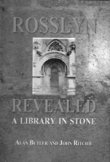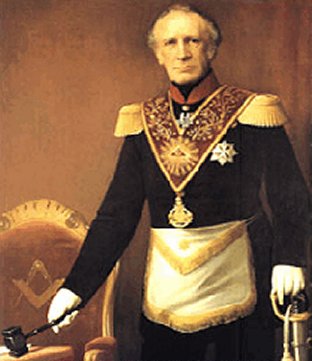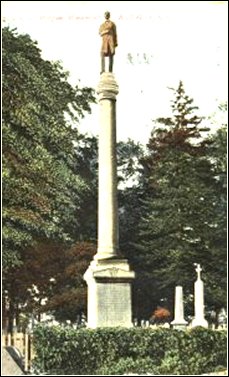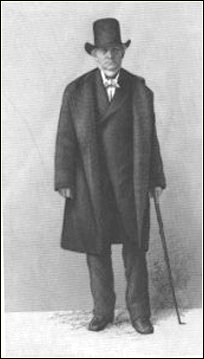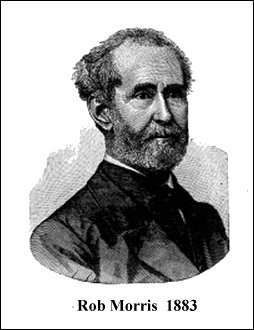
|
September 2009

Milam Lodge No. 2 AF & AM
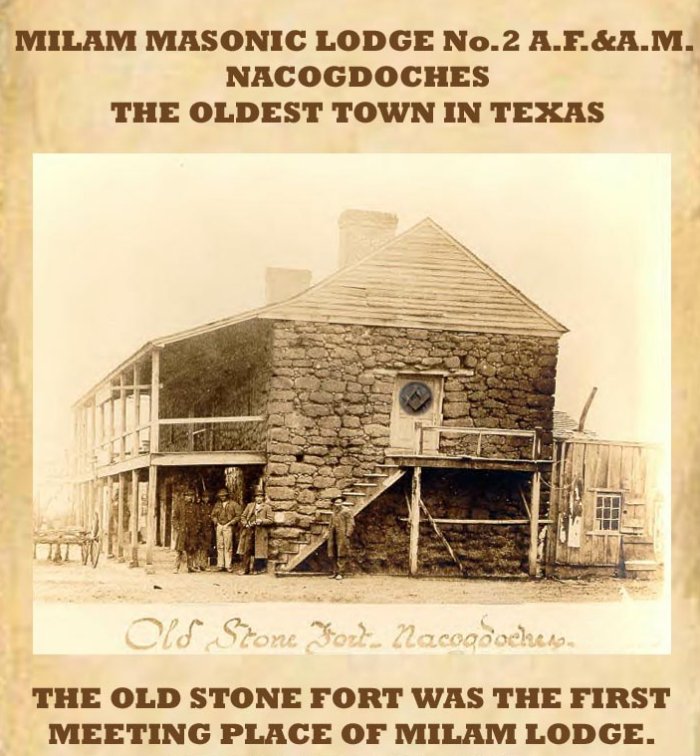 The Old Stone Fort |
|
Page II | |||||||||
|
This Small Town Texas Mason's E-Magazine is not affiliated with any state Grand Lodge or individual Blue Lodge. It was created to enlighten, educate and entertain Masons and non-Masons alike and as title suggests, it does feature a small town Texas Masonic Lodge and a story of Texas Masonic history in each issue
A very sincere effort was made to avoid using any copyrighted material, without permission or giving credit to the author, in the creation of this web site. If you discover something that is yours, without giving you due credit, please let me know and due credit will be given or the item will be replaced.
Any material in this site may be used to increase the understanding of Freemasonry.
Story tools: |
Milam Lodge #2 AF & AM
James Fannin
All About Google - Did You Know?
A Tour Of The American Grand Lodges Series
McKinley's Masons: Museum Exhibit Traces History In Ohio
Georgia speaks. Grand Master Jennings on the Georgia Affair
Restoration a Beacon of Masonic Pride
Mentoring at Work in The United Lodge of Otago No. 448
Why so many camels and swords? The Shriners' origin
George Washington in Lexington
Netherlands: Two types of Masonic Meetings
| ||||||||
|
PageV | |||||
The Grand Lodge of California
Reprinted With Permission Of The Author
Grand Lodge of California Masonic membership:
State population: 36,756,666 as of 2008 (estimated)
About the Grand Lodge
During the Gold Rush of 1849, thousands of settlers came to California in search of fortune. Those who were Masons brought their rich traditions with them, soon establishing some of California's first Masonic lodges in the mining towns of the Gold Country. In 1850 — the same year that California became a state — the Grand Lodge of California was established in Sacramento.
The Grand Lodge of California does not have a listing on Wikipedia.
The site includes a brief history of Freemasonry's origin there, and includes a fun interactive time line of Freemasonry in California.
Some of what I found on my excursion there:
The Grand Lodge site has a very strong URL (freemason.org) which gives it high presence in search engine placement for the term Freemason. Upon a simple search of the term Freemason, the California Grand Lodge ranks as the #3 for that search term.
Visually, the site it very clean and crisp with an immediate appeals to the eye. Both bright and interactive it has a strong professional presence. At the first load of the page is an attention grabber flash image of George Washington laying a corner stone that makes a quick transition from black and white to color introducing a number of interactive boxes for the visitor to explore. In those boxes are several of the elements that Freemasonry promotes including Tolerance, Personal Growth, Family, Philanthropy, Ethics, and Freedom. Each of the images are click able to display an image and an aphorism to the virtue and a member that exemplifies it.
Overall the layout is straight forward and in the places where it needs to delve deep with pull down menus with links to additional pages.
Visually, the site does not link overtly to the state of California in that the graphics could easily be extended to any other state with a quick change of the name California. Using the image of Washington in such a prominent position distracts from the prominence being on the state instead emphasizing a small part of Masonic history.
Prominent on the page at the top is a link to news and events which with a quick click hover over opens a list of items to select from (though disappointedly not events). In the list are several choices of interest to many, including past issues of the California Freemason magazine, press information, and the Grand Masters itinerary. What I did not find was a calendar of events, at least listed as such, as upcoming activities were listed under “news”. In the news section I did find an article on the websites award of excellence for its design and content. (Congratulations!)
The site itself is very flexible as it is a custom build with a great deal of development potential. In many respects the site has been developed out to the extent that it needs to be, as it covers most of what the Grand Lodge needs to communicate including contact info of the Grand Lodge, its leadership, its charitable endeavors and scholarships, public events, and member information.
Informational Content:
The Ca GL site definitely gives you your times worth of material to look at. What makes the content work is that the various sections are short and to the point for what they communicate. In some instances, it leaves the reader wanting more (as in the history), but in most it gives just enough to encourage the reader to take the next step, such as the How to become a mason | information section. It also transitions well from talking about California Masonry and how to become one to a link for “more info”, which takes you to a detailed and smart form for the user to fill in. Interestingly, it does not put as the priority the request to become a member, rather weaving it into it in to the offering of choices making it less about the conversion and more an informed reader's choice.
One feature that I do like is that each page carries the navigation to the other pages and makes ones visit there easy to get around. This is a function of the sites navigation (both the top and the side) that one can jump from page to page as they explore the site. It also uses the right side to feature ad blocks of relevant items for the visitor to click, such as the upcoming 150th Grand Lodge communication and opportunities to charitably give. Again, this is a very smart way to entice the visitor (both mason and non) to explore and find out more information.
Something I did not find were a variety of external links to sites not immediately tied to the grand Lodge. This is good in that it keeps the traffic on the site, but bad in that it does not illustrate partnerships or even California lodge sites. My guess is that it functions to keep an unbiased position for one site or another and keeps the specter of bias away from any particular site. This is good and bad in that it keeps bias out (good) but fails to illustrate the breadth of the fraternity in the state, country, or world. Under the related organizations tab there is a list of many Appendant national bodies and links to their websites.
Generally, the informational content is very good, being both enticing and informative setting the tone that Freemasonry in California is a strong and vibrant institution with lot of history and goings on, always giving enough information to make the viewer want to find out more.
Look and Feel.
As I mentioned above, the site is very crisp and clean, with a smart and professional look, while not being overly conservative or “institutional”. The use of warm colors (deep reds, warm grays, with spot photos) definitely makes the pages inviting to the eye. Even the mix of serif and san serif fonts is effective at differentiating between the artistic branding and the content. There is definitely some thought that has been put into the site, which is very evident in its details.
Overall:
From a first time visitor's point of view, I think that the Grand Lodge site would be very well received and make a very valuable impression on them as to the organization. It is clear, warm, and full of information. It does not try to overtly convert the reader into becoming a member, but rather seems to take the viewer on a journey into the site and its wealth of information. And, on every page is a constant link on how to join, which is a suitable conversion point amidst all of the sites content.
The flip side of that equation is the returning visitor or the member's visit, which is just as meaningful and interesting. Because there is a frequently updated news section, there is something to continue to come back to regularly and often so as to stay up-to-date on the goings on around the state. With so much content going in, what seems to be missing is a way to subscribe to the news, which could be easily remedied with an RSS feed from it or a newsletter sign up form, which seems just a step away from connecting the site to its membership. Because it necessitates the frequent return trip to pick up the news, it runs the risk of not reaching all the members who may come across the site because the updated news is buried three links in on the news & events section. Moving the news (via a feed or site dynamics) to the front page would easily transform the site from a single destination to a frequent communicator to the membership AND public showcasing all of the activities that they can participate in. Another alternative is a means to subscribe to the news that visitors can opt into. Much like receiving a mailer at home, frequent updates would keep the GL in mind as news rolls out.
Overall I think the site handles its conversion well in that in the information it presents, it portrays the fraternity in a very positive, professional, and meaningful way. It does have a bit of a disconnect from the state in that its use of art seems more a convention of east coast Masonry (Washington and the cornerstone) but once you dig into the site, it loops back in enough of the goings on to illustrate the membership of the state.
Bonus
|
|
Page VI | ||
by Carl Claudy
Ill. Carl H.Claudy, 33° was Executive Secretary of the Masonic Service Association from 1929 to 1957. He was raised in Harmony Lodge No. 17, Washington DC in 1908, serving as Master in 1932 and Grand Master of the Grand Lodge of the District of Columbia in 1943. He wrote many "Short Talk Bulletins", essays, and plays, among them The Lion's Paw, The Master's Book, and The Rose Upon the Altar. Here’s one of his stories... For Love - or Money? I'm afraid we are not going to have the pleasure of hearing Professor Filson," said the Yearling Mason to the Old Past Master, sitting beside him in the ante-room. "That's too bad," was the prompt response. "I don't know him. But I understand he's worth hearing. What's the trouble?" "Oh, it's money, of course. Filson always gets a hundred dollars a lecture, and the lodge can't afford to pay it. And of course Filson can't afford to lower his price, and there you are." "Why doesn't Filson give the Lodge the lecture then for nothing?" asked the Old Past Master. "Why, why should he? That isn't business. The electric light company doesn't give us light, the printer charges us for printed matter, the furniture store charges us for carpets; why should Filson present us with his ware?" "Seems to me there is a difference," suggested the Old Past Master. "Brother Filson, I suppose, comes to the lodge to spend an evening at times. When he does, he spends as much time here without paying, sitting on the bench, as if he were standing up talking. The electric light company could not give us current without spending money to produce it, the printer must pay his printers, the furniture man must buy his carpet. But Brother Filson would not have to spend any money to give his lecture; all he would have to spend would be a small part of what we have spent on him." "I don't think I understand that last- what we have spent on him?" "Thousands of years, millions of thoughts, untold effort, careful planning," was the prompt response. "Listen, my son," went on the Old Past Master; "have you ever stopped to think just what Masonry is and does? Masonry is the product of the most unselfish thinking, the most whole-hearted and selfless effort, the world has ever known. Through it a universal brotherhood of millions of men has been brought into being, to any one of which you and I and Brother Filson have the right to turn, sure of sympathy, understanding and some help in time of need. "Through Masonry, a system of philosophy has been evolved, and through its lodges that philosophy is taught to all brethren of the third degree, without money and without price. Through it we learn charity, toleration, courage, fortitude, justice, truth, brother love, relief. Through it we learn, decency, patriotism, highthinking, honor, honesty and helpfulness. Through it, and all of these, we are made into better men, better citizens, better husbands, better fathers, better lovers, better legislators, better followers of our several vocations. "Masonry may penetrate only a fraction of an inch beneath the skin of her followers, but by that fraction of an inch the man who takes even a little of her blessings to himself is a better man, and so the world is a better place for the rest of us. In some of us it strikes in deep, deep. We become soaked through and through with Masonic ideas, and strive, in our feeble, human way, to show forth to the world whatever measure we may accomplish of the perfection for which Masonry strives. Those of us who take it seriously and who love it much also make the world a better place for the rest of us. "The lodge provides a spiritual home for brethren who may have no other. If one has another in his church, the lodge gives him a second spiritual home to which he may go once in a while and feel even more strongly, perhaps, than in his church the close touch of his brother's hand, the sweet smile of a brother's love, the supporting arm of a brother's strength. To me, my lodge is a rest, a haven, a harbor for a tired mind. When I come to this lodge, whose destinies I guided so long ago, and which I have watched grow from a fledgling little body to a mature organization, I find myself uplifted, strengthened, made whole again. I may come tired, worn, weary with the day; I leave refreshed, invigorated, helped with the reviving of old truths, the remaking of old vows, the renewing of old ties. Our ancient brethren had 'cities of refuge,' to which the fleeing man, criminal or oppressed, might run for safety. Masonry is our modern 'city of refuge,' to which we, criminal in intent if we are such, or oppressed with injustice and cruelty, may fly for spiritual comfort and safety, knowing that within the four walls of a lodge is rest and peace and comfort. "All this has the lodge in particular and Masonry in general, offered since the beginning, to all upon whom Masonry lays her gentle hands. You are the recipient of her bounty, as am I. And so is Brother Filson. We three- and all within these walls- take generously and without stint from Masonry's store house of loveliness, of beauty, of rest, and comfort and love. "Often I ask myself 'what have I done for Masonry, which does so much for me?' Never do I feel that I have done enough. And Brother Filson, whom I do not know, might well ask himself that, before he thinks of what he might do for the lodge in terms of dollars, and prices and business. If, indeed, he has done one-tenth for Masonry and the lodge, what lodge and Masonry has done for him, he may hesitate. But if he is like the great, great majority of Masons, content to take much and to give little, willing to receive all and give nothing, careless of the structure which millions have raised in the past that he might benefit, unable to understand that to his hands, too, is committed the torch that those whocome after may see clearly, he has need of open eyes, and an understanding
The Old Past Master ceased and sat silent. From a chair across the ante-room a brother rose and came slowly forward. "I do thank you, my brother," he said, "from the bottom of my heart. The Lodge will certainly hear that lecture as soon as the Master wishes it. My name is Filson." Several Claudy books are available in PDF format: from RW Gary Dryfoos’ website:
Introduction to Freemasonry — Vol. I Entered Apprentice |
|
Page VII |
|
By Brother Otis Erickson I'm sure that George Washington was your best guess. After all, no one else comes to mind. But think back to your history books - The United States Declared its independence in 1776, yet Washington did not take office until April 30, 1789. So who was running the country during these initial years of this young country? It was the first eight U. S. Presidents. In fact, the first President of the United States was one John Hanson. I can hear you now - John who? John Hanson, the first President of the United States . Don't go checking the encyclopedia for this guy's name - he is one of those great men that are lost to history. If you're extremely lucky, you may actually find a brief mention of his name. The new country was actually formed on March 1, 1781 with the adoption of The Articles of Confederation. This document was actually proposed on June 11, 1776, but not agreed upon by Congress until November 15, 1777. Maryland refused to sign this document until Virginia and New York ceded their western lands ( Maryland was afraid that these states would gain too much power in the new government from such large amounts of land). Once the signing took place in 1781, a President was needed to run the country. John Hanson was chosen unanimously by Congress (which included George Washington). In fact, all the other potential candidates refused to run against him, as he was a major player in the revolution and an xtremely influential member of Congress. As the first President, Hanson had quite the shoes to fill. No one had ever been President and the role was poorly defined. His actions in office would set precedent for all future Presidents. He took office just as the Revolutionary War ended. Almost immediately, the troops demanded to be paid. As would be expected after any long war, there were no funds to meet the salaries. As a result, the soldiers threatened to overthrow the new government and put Washington on the throne as a monarch. All the members of Congress ran for their lives, leaving Hanson as the only guy left running the government. He somehow managed to calm the troops down and hold the country together. If he had failed, the government would have fallen almost immediately and everyone would have been bowing to King Washington. Hanson, as President, ordered all foreign troops off American soil, as well as the removal of all foreign flags. This was quite the feat, considering the fact that so many European countries had a stake in the United States since the days following Columbus . Hanson established the Great Seal of the United States, which all Presidents have since been required to use on all official documents. President Hanson also established the first Treasury Department, the first Secretary of War, and the first Foreign Affairs Department. Lastly, he declared that the fourth Thursday of every November was to be Thanksgiving Day, which is still true today. The Articles of Confederation only allowed a President to serve a one year term during any three year period, so Hanson actually accomplished quite a bit in such little time. Seven other presidents were elected after him -
1. Elias Boudinot (1782-83), ......all prior to Washington taking office. So what happened? Why don't we hear about the first eight presidents? It's quite simple -- The Articles of Confederation didn't work well. The individual states had too much power and nothing could be agreed upon. A new doctrine needed to be written - something we know as the Constitution. And that leads us to the end of our story George Washington was definitely not the first President of the United States . He was the first President of the United States under the Constitution we follow today. And the first eight Presidents are forgotten in history. YOU HAVE TO BE A LOVER OF HISTORY TO APPRECIATE THIS!! (It took 8 years to establish a successful government. You might just remember this when you hear that so little progress has been made during these last 3 years in establishing a Government in Iraq.)
There you are, another lesson in U.S. History.
|
|
Page VIII | |||
By Gary Brown CantonRep.com staff writer
Nearby is the sword he wore as a Mason, an artifact from the Mason lodge at Canton Masonic Temple that Wm. McKinley Presidential Library & Museum curator Kimberly Kenney included in the traveling exhibit brought to the McKinley museum by Ohio Historical Society. (Information has been corrected to fix an error at 5:20 p.m. Feb. 12. See correction at end of story.) The “Masons in Ohio” exhibit at the McKinley Museum attempts to show that there is more to being a Freemason than wearing a funny hat. “To be a Freemason,” says text in the exhibit, “a man must be at least 19 years old, believe in God, and be of good moral character.” FRATERNITY OF PRESIDENTS Four of Ohio's eight presidents, including McKinley, lived up to that standard. Portraits of Warren G. Harding, William H. Taft and James A. Garfield accompany McKinley's photograph in the exhibit, and hang on the wall not far from a listing of the Masonic bodies of which McKinley was a member. Eagle Lodge No. 431, Free and Accepted Masons, was one of them. So were Canton Chapter No. 84, Royal Arch Masons, and Canton Commandery No. 38, Knights Templar. “It isn't surprising that 14 presidents were Masons,” said Chad Simpson, director of program development for the Grand Lodge of Free & Accepted Masons of Ohio in Worthington. “Our presidents were all extraordinary individuals, but in many ways they were just ordinary people.” And joining fraternal groups — one of the most popular being the Masons — was a common thing for “ordinary” people to do for many of the 200 years since the Grand Lodge of Ohio was organized from six Masonic groups, said Simpson. Indeed, it was last year's bicentennial of the Grand Lodge that gave birth to the exhibit, said Simpson. This year, the artifacts from the Grand Lodge museum were brought to Canton and combined with artifacts from McKinley museum and other area Masonic locations to “build a little interest” in the Masons at a time when membership in fraternal organizations is not at its peak. “We're trying to demystify it,” said Simpson, “and give people a little idea of what we do in our lodge.”
Indeed, one of the first displays in the exhibit, assembled from the furniture of a Masonic lodge in Massillon, is the setting of a lodge room. “In the middle you kind of get an idea of how a Masonic lodge looks,” Simpson explained, “and other artifacts surround it.” Among those peripheral artifacts are a hand-carved Masonic bible, completed by William Clark Cole while stationed at Camp Dennison. The bible is “opened” to the 133rd Psalm and is illustrated with several Masonic emblems. Nearby are the artifacts upon which many of those Masonic symbols are based — the tools of stone masons. Other display cases hold artifacts used in past Masonic rituals — gavels and attire. On the walls are Masonic membership certificates. And one case offers artifacts of women affiliated with the Masons — “jewels” worn by members of the Order of Eastern Star. A few feet away is the McKinley display area, which includes his sword, photographs of McKinley in Masonic uniforms, and information about his membership in the Masons, which he joined in 1865. LOCAL CONNECTION “The significance of this exhibit to us is that we use the Keller Gallery to explore local history and right now this is an extension of the (adjacent) McKinley Gallery,” noted curator Kenney. “We thought it was appropriate to explain to people what the Masons were because our president was a Mason.” The Grand Lodge has an interest in relating to local history, said Simpson. But the exhibit also has the larger purpose opening a window to Masonic activity at a time when Masons often are being criticized for the “secret” nature of their organization.
“If it wasn't an organization doing good, it wouldn't have lasted this long,” he said. “And if it wasn't good, your grandfathers and your fathers and your favorite uncles wouldn't have been involved in it.”
|
|
Page IX | ||
(I’ll save my thoughts for the end…)
J. Edward Jennings Jr. – Grand Master
August 19,2009
EDICT No. 2009-1
TO ALL CONSTITUTENT LODGES UNDER THE CONSTITUTION OF THE GRAND
LODGE OF GEORGIA, FREE & ACCEPTED MASONS:
WHEREAS: Freemasonry has existed in Georgia since it founding in 1734 and is the oldest Fraternal organization in the State, and;
WHEREAS: Freemasonry is universal in scope, being a Brotherhood of Man under the Fatherhood of God, and;
WHEREAS: the Grand Lodge of Georgia, Free & Accepted Masons, holds membership in this worldwide Brotherhood, and;
WHEREAS: our Ancient and Honorable Fraternity welcomes to its doors and offers its privileges to men of all races, colors and national origins who believe in a Supreme Being, as stated in our Degrees and Lectures, and;
WHEREAS: no reference is made to exclude any petitioner with regard to race, color or national origin in any of the Rituals or Masonic Code authorized for use in the Constituent Lodges chartered by the Grand Lodge of Georgia, Free and Accepted
Masons, and;
WHEREAS: it is incumbent on all members of our Brotherhood to abide by the Rule’S, Regulations, Laws and Edicts of the Grand Lodge of Georgia, Free and Accepted Masons;
THEREFOR BE IT RESOLVED:
That no negative reference be made by any officer or member of any lodge chartered under the Constitution of the Grand Lodge of Georgia, Free and Accepted Masons, in reference to a petitioner’s race, color or national origin, who believe in a Supreme Being, during any Lodge communication, conferral of degrees, proficiency practice o proficiency examination;
Further, be it resolved, that it is the responsibility of the Worshipful Master of each Lodge constituted under the Constitution of the Grand Lodge of Georgia, Free and Accepted Masons, to insure and enforce strict compliance with this EDICT, an, further, to have it read at the next two communications of the Lodge after receipt by the Lodge.
Any Lodge reported in violation of this Edict will be disciplined.
Given under my hand as Grand master of the Grand Lodge of Georgia, Free and Accepted Masons, this 19th day of August, 2009.
Signed:
Attested:
(The Resolution addresses the issue of the “incident” that took place in June about the charges brought against Gate City Lodge (see My Brothers Keeper) for their raising of an African American to the degree of Master Mason and then allowing him to progress to an officer’s position.
Reading the above, it seems to say nothing of the charges brought, or their spurious nature, any past exclusion based on race, or impropriety of racial segregation. Essentially, it is a safe way of saying that “we don’t promote any bias on race, religion, or color (never mind sexual orientation)” despite what people say. Neither does it seem to suggest any acknowledgment of the bias that this edict was written to.
What do you think? Is this enough? Does this speak to an enlightened brotherhood of man under the fatherhood of God? Is it enough, or should it say more?)
|
|
Page X | ||||
From the "New Zealand Freemason" Reprinted With Permission Of The Editor
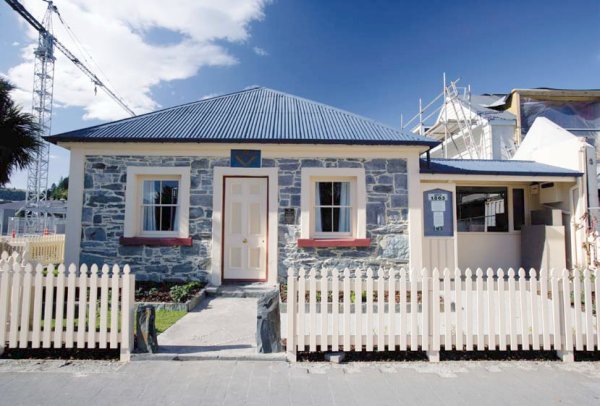
The completion of the restoration of the building of Lake Lodge of Ophir No. 85 on the lakefront in Queenstown earlier this year not only marked a notable moment in the history of that Lodge but made a mark for all New Zealand Freemasons. On Saturday 15th March the Lodge celebrated the completion of the restoration work with a public ceremony attended by local dignitaries including the Mayor of Queenstown as well as senior local and national leaders of the Craft. This was followed by the Installation of the 100th Master, WBro Bruce Jefford.
The story of the restoration goes back to 1999 when the highest ever recorded flood occurred with extensive damage from metre-high water throughout the building. Insurance paid for repairs then (not available now) but it was later realized that the building required further major work to ensure its survival. The $70,000 cost has been raised from local trusts but with Freemasons New Zealand, with consideration for the significance of the project, ensuring the work was completed. With repairs to roof, window frames, and extensive refitting of the interior (including the wonderful dome ceiling) and restoration of the stone walls back to their original state, the grounds groomed and the property newly fenced, the building is ready to face the next 145 years!
The whole event in March was an outstanding success attracting considerable local publicity but we should all be grateful too. Queenstown is probably the most publicly prominent Masonic building in the country. More than one million people visit Queenstown every year with the numbers rising. And there 'we' are, right on the lakefront, where nearly every visitor must wander while they are in town.
The Freemasons building, 'our' building, old, solid and well cared for is now a shining example of the strength, the longevity and principles of the Masonic fraternity today. We're proud of you Ophir No. 85!
| ||||
|
From the "New Zealand Freemason" Reprinted With Permission Of The Editor
How mutual? You can bet that the new man will come in with considerable knowledge about the Craft, having spent quite some time on the internet before agreeing to join. He will ask some questions that will make the older brother stop and pause, and maybe go away and search for an answer. Either way, the process of sharing knowledge and tradition will benefit both parties immensely. Can anyone be a good mentor? It requires enthusiasm, love of the Craft, a good knowledge of its practices, some patience and quite a bit of time.
The process of sitting down in a quiet place, perhaps over a meal, away from the lodge, gives the chance for an informal and relaxed atmosphere conducive to lots of questions and discussion. The mentoring booklets from the Education Committee ensure structure to the session and that nothing important is left out. At least two such sessions, in addition to any visiting or phone or e-mail contact, are a recommended minimum between degrees. ot only can the salutes be perfected and the test questions thoroughly learned but all aspects of work in the degree can be discussed and explained carefully.
If the new Mason and the selected mentor don't seem to “hit it off ”, or if illness or overseas travel etc get in the way of the process, it is better that a new mentor be found quickly to ensure that the journey of Masonic progress isn't held up.
|
|
Page XI | |
Everywhere you turn in the Kora Shrine Temple there is a touch of the Middle East. Elaborate camel heads
carved into the wood by the staircase. A mural of the pyramids at sunset over the dining-room bandstand.
A crescent-shaped maroon altar upstairs. All Shrine Temples have a Middle Eastern theme, but not all have
as strong and ornate a feel as Lewiston's.
What's with all the symbolism? Frank Preble explains: Back in the late 1800s, a New York Mason traveling
abroad attended a lavish soiree thrown by French royalty, Preble said. "All of the people were dressed in
Arabic garb," he said. "He was quite impressed with all that, the fezzes and the ornate stuff and the color
of the garb they wore, and that's how we ended up. He came back and created Shriners.
"They thought at the time that the Masonic fraternity was too staid and businesslike. They were looking
where they could go, commingle and have fun, drink, and wine and dine with their ladies. This was created
as the fun portion of the Masonic fraternity." And those leadership titles? Also, in all likelihood, a means of
being different, David Lidstone said. The temple's leader - the potentate - translates to being a company
CEO. The chief rabban is a vice president, the assistant rabban is a second vice president and so on. Potentates,
responsible for everything that goes on at the temple, hold that title for one year. It used to be that
men entered a leadership track that took 10 years to reach that top spot, Preble said. That's since been cut
to seven. Lidstone is in line to be potentate in January 2010. Karl Finnimore is the current potentate.
Kora Shrine
Kora Shrine Temple
Interested in a tour? Just ask
The public is welcome to stop by during the week, Monday to Friday from 9am to 5pm for a look inside. To
arrange for a guided tour, call in advance: 782-6831
What is a Shriner?
Men who become "Nobles of the Mystic Shrine" - Shriners - are Freemasons who have reached the high rank
of Master Mason. According to KoraShiners.org, men can apply to their local lodge to become a Freemason
if they're 18 or over, wish to join the fraternity and believe in a god (any god - members are Catholic,
Jewish, Muslim and of other religious backgrounds).
Masonry "dates back hundreds of years to the time when stonemasons and other craftsmen gathered in
shelter houses or lodges. Over the years, formal Masonic lodges emerged, with members bound together
not by trade, but by their own desire to be fraternal brothers," according to the site. Shriners support 22
Shriners Hospitals that offer free care to children in need with issues including burns and orthopedic problems.
| |
|
Reprinted With Permission Of The Author by Brother Terence Satchell - The Euphrates At Masonic Information
Ferris Thompson was sitting on a bench outside of the lodge building, enjoying a pipe full of Marlin Flake. One of the younger, more progressive members of the lodge, Sean, came out of the building and sat by him. “I hear that Brian dimitted from the lodge,” he said, “he gave some reasons including the fact that he determined that since Masonry wasn't solely Christian in nature, he didn't feel he could belong.” “Is that so?” asked Ferris. “Well, if that's what he has decided then it is what is best for him.” “Yup. I just don't get guys like that. Christians—especially church goers—are just so ignorant. Don't they know that the Jesus story has been told a million times before? Or that the origins of their religion are just as pagan as the origins of any other? I think that any Mason that still considers himself a devout Christian has no place in the organization.” Ferris puffed on his pipe for a couple of moments, composing his thoughts. “So who convinced you to come to that conclusion?” “Well, I did. I studied Christianity and spirituality a lot and it didn't take long for me to realize it was worthless.” “Hmmm…that is interesting indeed. But did you ever consider the early Christians that closely examined their religion like Paul and John? What about Martin Luther or John Calvin? There certainly have been men that studied Christianity much more thoroughly than you have, so thoroughly that it consumed their entire lives and yet they still subscribed to the Christian religion. What do you do for a living?” “I'm a computer programmer.” “So would you say you have devoted the majority of your life to the study of Christianity?” “No.” “So who are you to tell these men that they are wrong? Who are you to tell any man who has devoted the same amount of time that you have to such study that they have come to the wrong conclusion?” Sean became defensive, “Well, do you believe that Christian stuff?” “Some of it, yes. Some of it, no. But it is my decision and my faith. In a Masonic lodge, no dogma is greater than any other. Christian, Jew, Muslim, Hindu, or even personal, independent worship are perfectly equal in the lodge. Our symbolism is applicable to every religion and no religion at the same time. No one can look at the faith of his Brother and say 'Mine is better.'” Sean thought for a second and then said, “You can if they have developed an incorrect image of God.” He had a smirk on his face, he thought he had fooled his senior Brother. “Have you ever met God?” The smirk left Sean's face. Ferris emptied the contents of his pipe bowl. “My Brother, you have taken great steps to find the destination of your personal spiritual journey and I commend you for that. But you cannot degrade those that have taken another path. Are they not still traveling toward the same destination? A Mason must be tolerant, he must accept that others may disagree with him. Do Christian Masons have the right to tell you that you are wrong and that Masonry is a Christian organization?” Sean swallowed, as though he was digesting his pride. “No they don't…I suppose I have been a little hard headed about this, huh?”
“Sure you have, but now you've learned. Now suppose you give me your interpretation of the symbolism of the Third Degree based on your religious views and later we can discuss it from my perspective.”
|
|
Page XII | ||||||||||
From the Masonic National Heritage Museum
The Scottish Rite Valley of Detroit purchased the painting in 1927 for display in their newly constructed and impressive Masonic Temple. Exhibited in Detroit for decades, George Washington now watches over the National Heritage Museum's auditorium. A loan from the 32º Masons of the Valley of Detroit brought the painting to Lexington. Interested in depicting inspirational moments in history, Leutze featured Washington in several compositions. The best known of these continues to be George Washington Crossing the Delaware. Leutze first exhibited this now-iconic image to great acclaim in 1851. Critics considered it a "great modern painting" in its day. But why did Leutze choose to paint Washington surrounded by Masonic tools and wearing an apron thought to have been given to him by Marquis de Lafayette? (For more on the apron once believed the handiwork of Madame Lafayette, visit the Masonic Museum and Library of Pennsylvania.) As far as we know, Leutze himself was not a Freemason. New Yorker John Riston paid the princely sum of $10,000 for the large (over ten feet high) painting. The artist likely created the work to fulfill a specific request from Riston.
Take a trip to the Masonic National Heritage Museum in Lexington MA
Editor: In 1860 Leutze was commissioned by the US Congress to decorate a stairway in the Capitol Building for which he painted a large composition, Westward the Course of Empire Takes Its Way. Leutze's portraits are known less for their artistic quality or than for their patriotic emotionalism, and cannot be relied on for historical accuracy. Washington Crossing the Delaware firmly ranks among the American national iconography, and is thus often caricatured, as are many creations of the Romantic
movement.
|
|
Page XIII | |||||||||||||
| |||||||||||||
|
Page XIV | |||
THE ORIGIN OF COMPARITIES
Extracted from Working the Craft in the Netherlands At the end of Prince Frederik's term of office (1881) two developments set in which have had a decisive influence on the working of the Craft in the Netherlands. To begin with, individual lodges were now trying to obtain their own buildings. Halfway through the 19th century only a few lodges had a building of their own: at the end of the century not having one was exceptional. This may seem a minor point, a mere practical matter, but in fact it had far wider implications: having a building of one's own and using it only once a month is highly uneconomical, and a heavy burden on resources.
This in turn led to a change of procedures. As long as meetings had taken place once a month and had mostly been 'Open Loges' -formal meetings - there had been no need to prepare a programme. When meetings became much more frequent, evening-programmes had to be made to ensure meaningful occupation. Very soon a distinction was made between 'Open Lodges', held in a separate room in the building: the temple, permanently equipped for that purpose, and comparities - informal meetings - which were held in the voorhof - the ante-room - an ordinary meeting-room, which required no special facilities and could also be used for other purposes. A regular item on the programme of these informal meetings was a bouwstuk, (a morceau d'architecture:), an introductory paper on a subject considered to be of interest to the brethren, which might lead to fruitful discussions afterwards and an opportunity for greater mutual understanding and acquaintance. No wonder that the 'social issue' played a part in this development: subjects for these papers were chosen against the background of what had come to be seen as the aim and purpose of Freemasonry. General social issues were obvious choices, and so were subjects in the field of phenomenology of religion, and philosophy. As both issues bordered on the off-limits topics of the lodge: - anything that might cause disputes on religion or religion - there was understandable hesitation as to whether or not discussion of these 'social issues' could be allowed. PRESENT-DAY EXPLANATION OF A COMPARITIE provided on the internet by Lodge L'Union Provinciale, Groningen. What is a comparitie? The Dutch word 'compareren', according to the (Dutch) Lexicon for the Freemason literally means "to appear at a specific place".
The term comparitie is used within Dutch Freemasonry for meetings of members of a lodge, during which a 'piece of architecture' (bouwstuk) (that is, a lecture) is delivered. It concerns a meeting held in masonic style wherein no ritual is performed. During the comparitie domestic business is discussed, pieces of architecture are delivered with an ensuing exchange of ideas. The opening and closing of the meeting are carried out in masonic style but without the usages of an open lodge. The comparitie takes place in a space which is also known as the Forecourt (Voorhof). The word 'bouwstuk' (piece of architecture) derives from expression such as 'building the temple of humanity' and 'building the temple of perfection'. During a piece of architecture a presentation is made the contents of which usually deals with to the toil of a freemason, community matters or subjects dealing with masonic symbolism. It is the custom that the subject matter of a piece of architecture does not deal with political or religious dogma. As many different beliefs and ideas prevail in a lodge and because freemasonry as an organization does not hold or promote any points of view in these matters, a careful approach is taken when such subjects are being discussed. When a piece of architecture is completed the brethren present exchange thoughts about the subject matter of the presentation. It is the then customary to avoid the possible development of a dogmatic discussion, but this does not prevent that one can indicate his disagreement with a particular matter.
The Comparitie, a meeting with a lecture and discussion, is unique within Dutch Freemasonry. In other
countries where freemasonry is active this kind of meeting is unknown. The comparitie originated during
the time when Prince Frederik was Grand Master. During this period many lodges obtained their own
building and a need arose to meet more frequently. Until then they only met for the purpose of Open
Lodge, a meeting at which a ritual was carried out. A ritual was performed at the celebration of masonic
high days and the working of the blue degrees. Hence the number of meetings per year were about ten to
fifteen. Because of the desire to meet weekly the need arose for a new format forthe extra meetings
which over time developed into the present-day format of the comparities
|
|
Page XV | |||
Reprinted With Permission Of The Author By Stephen Dafoe - Between the Ashlars At Masonic Information
And yet the murder of William Morgan was never proven; the discovery of a body on the shores of Oak Orchard Creek a year after his disappearance, at first supposed to be that of William Morgan was just as quickly supposed to be that of Timothy Monro, a Canadian who had allegedly drowned a few weeks before the discovery. And so the matter was brought to a close. No corpse, no crime. In 1831, Victor Birdseye, who served as the last special council in the Morgan investigations concluded on his report to the New York State legislature that: “The information thus elicited, is sufficient, I trust to satisfy the public mind as to the ultimate fate of Morgan: that he was taken into the Niagara, at night, about the 19th of September and there sunk. Yet the evidence, although apparently sufficient for all purposes of human belief, is not sufficient to establish, with legal certainty, and according to adjudged cases, the murder of Morgan.” (1) Birdseye could not help but be frustrated as he saw his efforts as well as those of his predecessors, John C. Spencer and Daniel Mosley, thwarted as key Masonic witnesses and accused either dodged questions in the witness box, refused to testify altogether or fled the scene to avoid prosecution. Five years of legal investigation and prosecution on the matter of Morgan's disappearance resulted in 20 grand juries and 15 trials. Of the 54 Freemasons indicted by the grand jury, only 39 were brought to trial and only 10 of those were convicted. (2) Although the 10 Masons convicted of abducting Morgan served light sentences ranging from one month to 28 months, the Craft as a whole served a nearly two-decade-long period of Masonic caliginosity, a backlash against the Craft that punished all Freemasonry for the actions of a few of its misguided members. And yet, Freemasonry survived and grew to strength in the years after the American Civil War, her opponents less vocal than they had been when anti-Masonry had passed through the churches on its journey from the honest indignation of the citizens of Western New York to the political machinations of the Anti-Masonic Party, a party led by men like Thurlow Weed.
“Whitney then related in detail the history of Morgan's abduction and fate. The idea of suppressing Morgan's intended exposure of the secrets of Masonry was first suggested by a man by the name of Johns. It was discussed in lodges at Batavia, Le Roy and Rochester. Johns suggested that Morgan should be separated from Miller and placed on a farm in Canada West. For this purpose he was taken to Niagara and placed in the magazine of the Fort until arrangements for settling him in Canada were completed, but the Canadian Masons disappointed them. After several meetings of the lodge in Canada, opposite Fort Niagara, a refusal to have anything to do with Morgan left his “kidnappers” greatly perplexed. Opportunely a Royal Arch chapter was installed at Lewiston. The occasion brought a large number of enthusiastic Masons together. “After labor,” in Masonic language, they “retired to refreshment.” Under the exhilaration of champagne and other viands the Chaplain (the Rev. F. H. Cummings, of Rochester) was called on for a toast. He responded with peculiar emphasis and in the language of their ritual: “The enemies of our order may they find a grave six feet deep, six feet long, and six feet due east and west.” Immediately after that toast, which was received with great enthusiasm, Col. William King, an officer in our war of 1812, and then a Member of Assembly from Niagara county, called Whitney of Rochester, Howard of Buffalo, Chubbuck of Lewiston, and Garside of Canada, out of the room and into a carriage furnished by Major Barton. They were driven to Fort Niagara, repaired to the magazine and informed Morgan that the arrangements for sending him to Canada were completed and that his family would soon follow him. Morgan received the information cheerfully and walked with supposed friends to the boat, which was rowed to the mouth of the river, where a rope was wound around his body, to each end of which a sinker was attached. Morgan was then thrown overboard. He grasped the gunwale of the boat convulsively. Garside, in forcing Morgan to relinquish his hold was severely bitten.” (5) Weed's version of Whitney's story was pretty strong evidence against the Masonic fraternity at a time when Freemasonry was once again feeling the pressure of anti-Masonic inquiry. The letter, which was published by the National Christian Association in pamphlet form in 1882 also found its way into many New York newspapers including the December 7, 1882 edition of The Malone Palladium, which ran the letter below the headline, The Death of Morgan: Thurlow Weed's Dying Revelation. (6) It is doubtless that few readers, particularly those predisposed to a mistrust of Freemasonry, gave any critical thought to Weed's claims, accepting the account as a true and accurate depiction of what really happened.
Morris' reimagining of the series of events from Morgan's arrest in Batavia until his disappearance at Fort Niagara is largely based on the alleged oral testimony of his key witness in his defense of the Craft, John Whitney; the same man Thurlow Weed claimed confessed to assisting with Morgan's murder.
|
|
Page XVI |
Continued From Page XV
But the same can be said of the Freemasons who accepted, without question, another version of the Whitney confession, the one offered by the Masonic author Rob Morris. In 1883, the year after the raising of Morgan's monument in the Batavia cemetery, Morris, a well-known and well-loved Masonic poet and author, wrote a book called William Morgan or Political Anti-Masonry, its Rise, Growth and Decadence. The book presented the argument that Morgan was not abducted and murdered by Freemasons, but deported to Canada at his own request. It is little surprise that the story, as told by Morris, was joyfully received by the Masonic fraternity and became the foundation stone upon which other Masonic writers would build their version of the tale, a tale that is accepted and repeated by North American Freemasons to this day. Morris' reimagining of the series of events from Morgan's arrest in Batavia until his disappearance at Fort Niagara is largely based on the alleged oral testimony of his key witness in his defense of the Craft, John Whitney; the same man Thurlow Weed claimed confessed to assisting with Morgan's murder. Whitney's account of things is told in Chapter VII of William Morgan and is claimed to be information Whitney gave to Morris in 1859. (7) The Morris / Whitney story tells us that it was John Whitney and Nicholas Chesebro who engineered Morgan's "deportation" to Canada, assisted by a handful of other dedicated members of the Masonic fraternity, viz. Col. William King, Burrage Smith, Loton Lawson and Sheriff Eli Bruce, (8) the entire plan organized with the full understanding, acceptance and financial support of Governor De Witt Clinton. (9) Morris claimed that John Whitney told him he went to visit Clinton at Albany in August of 1826, returning to Rochester with a detailed plan and a signed letter from the Governor making it clear that "no steps must be taken that would conflict with a citizen's duty to the law." (10) Clinton's plan, according to the Morris / Whitney story was to attempt to buy Morgan's manuscript and get him to agree to a deportation to some foreign country where he might be separated from his publishing partner David Miller. (11) The governor also assured Whitney of $1,000 if required, and the assurance that those involved would be sustained by Masonic authorities within New York State, so long as things were kept legal. (12) Whitney allegedly went to Batavia on September 5th, 1826, where he offered Morgan $50 cash and the payment of his debts if he would destroy his exposé and leave the country. (13) With Morgan's willingness to leave taken care of, Whitney then went to Canandaigua the next day to involve Nicholas Chesebro in the plan, both men being known to each other through their membership in the Knights Templar at Rochester. (14) The two men agreed that the easiest way to get Morgan quietly out of Batavia was to have him arrested, (15) Ebenezer Kingsley being persuaded to press charges against Morgan for the shirt and cravat Morgan had borrowed from him the previous May, but had yet to return. Morgan's journey from the jail at Canandaigua to Fort Niagara is covered by Morris in the course of a few pages that make a hero of Whitney for staying with Morgan the whole journey as they changed horses and carriages, all donated by Masons willing to help separate Morgan from his publisher David Miller. (16) In Whitney's account of the story, he was joined by Eli Bruce and Col. William King at Lockport and the three men traveled with Morgan from Youngstown to the soldier's burial ground, a half mile from Fort Niagara in the early hours of September 14, 1826. (17) When Whitney, King and Bruce arrived at the river's edge, Edward Giddins and Elisha Adams transported the three men and Morgan across the river to a deserted bank on the Canadian side, a mile from the Village of Niagara. (18) Morgan remained in the boat with Giddins and Adams, while Bruce, King and Whitney went to the village and met with two Canadian Masons, men Whitney was unprepared to reveal to Morris 33 years after the event. (19) After a while, the Canadian Masons returned to the boat with their American counterparts and Bruce summoned Morgan to join the five men on the shore. With nothing but the moon and a couple of lanterns to light the night, Morris would have his reader believe that Colonel King made notes on several points Morgan swore to before the party of Masons: "First. That he had contracted with Miller and others, to write an exposition of Masonry, for which he was to receive one half-million dollars compensation. "Second. That he had never been made a Mason in any Lodge, but had received the Royal Arch Degree in a regular manner. Furthermore, that he felt bound by his Royal Arch obligation and never intended to reveal the secrets of that degree. "Third. That Miller and the other partners had utterly failed to fulfill the terms of contract with him. "Fourth. That Whitney had paid him $50 at Danolds' Tavern (Batavia), and he had agreed to destroy the written and printed work so far as possible and furnish no more, and that before leaving Batavia he had done what he promised in that way. "Fifth. That it was impossible now for Miller to continue the "Illustrations," as he [Morgan] had written them. If he published any book, it would have to be made from some other person's materials. "Sixth. That Miller was only an Entered Apprentice, and 'rusty as hell' at that. "Seventh. That he had been treated by Chesebro, Whitney, Bruce and all of them, with perfect kindness in his journey, and he had nothing but the best of feelings for them. "Eighth. That he was willing and anxious to be separated from Miller and from all idea of a Masonic Exposé; wished to live in habits of industry and respectability before all men; wished to go to the interior of Canada and settle down as a British citizen; wished to have his family sent him soon as possible; might want to go to Quebec some time and have his eyes operated on; expected five hundred dollars when he reached the place as agreed upon; expected more money from year to year to help him out if necessary and if he should show himself worthy of it. "Ninth. Finally he was sorry for the uproar his proceedings had made; was sorry for the expense he had put the Masons to; sorry for the disgrace he and his family had suffered; sorry for the shame and mortification of his friends, and he 'had no idea that David Cade Miller was such a damned scoundrel as he turned out to be.'" (20) Whitney claimed that the Canadian Masons, although prepared to take Morgan as agreed, couldn't do so for a week and were unprepared to keep him during the interim. Morgan consented to being locked up in the powder magazine at Fort Niagara until that time and Edward Giddins prepared the room with a mattress, chair and other items for Morgan's personal comfort. (21) Morgan finally left the magazine on September 17, 1826 when the two Canadians came over to the American side, gave Whitney a receipt for the $500 they were to give Morgan and returned to the western side of the river. Whitney claimed that the two Canadian Masons rode on horseback with Morgan from the Village of Niagara to a spot near present day Hamilton, Ontario where they had him sign a receipt for the $500 and a document outlining the circumstances of his deportation, as well as a promise not to return to the United States without the permission of Colonel William King, Sheriff Eli Bruce or John Whitney. (22) Conveniently, all of the documents vanished when they could have been used to prove the innocence of the abductors. Morris was a master at telling his audience what they wanted to hear. It is important to remember that Freemasonry had only recently returned from a period of Masonic darkness that ran for nearly two decades and was only now beginning to grow to strength after the conclusion of the American Civil War. But it was also a time when The National Christian Association, assisted by Thurlow Weed, were rekindling anti-Masonic feelings with the former's erection of the Morgan monument in 1882 and the latter's death bed support of the same. One can hardly blame Morris for wanting to defend Freemasonry, an institution he loved, and his book William Morgan was released within months of the erection of the Morgan monument. But is it a true account of what happened? As much as we would like to believe every word of Morris' account, it is a lie.
|
|
Page XVII |
Continued From Page XVII
William Morgan was not Morris' first book on the subject. In 1861, two years after his alleged interview with John Whitney, he published 1,000 copies of the book The Masonic Martyr: The Biography of Eli Bruce, Sheriff of Niagara county N.Y., who for his attachment to the principles of Masonry, and his fidelity to his trust, was imprisoned twenty-eight months in the Canandaigua jail. (23) This book, as the lengthy title implies, was designed to remove the shadow that had been cast over the name of Eli Bruce, who had received the harshest sentence of any of the Morgan conspirators. Although the bulk of the book recounts the 28 months Bruce spent in the Canandaigua jail (the same jail from which Morgan was taken in the middle of the night) Morris offers a chapter on the abduction of Morgan and one on the anti-Masonic party. It is these two chapters that are most telling in light of Morris' later treatment of the subject. Although frequently softening the blow against Freemasonry, Morris presents his reader with a fairly straightforward account of the Morgan story up to his placement in the powder magazine at Fort Niagara, even leveling criticism at Freemasons for being imprudent in their actions and murderous threats against Morgan. (24) It is only in his closing paragraphs that Morris provides us with the embryo of an idea that he would carry to full term two decades later: "Our own surmise, which, after a careful perusal of all the testimony, and much questioning of the remaining actors in the abduction who still survive, may perhaps be as good as any other, is that Morgan was abundantly supplied with money by those who had expended so much, and run such risks to separate him from Miller and his confederates, and that he was assisted to pass into Canada, the scene of his former adventures, where among a rough and lawless border population, he met the end likely to befall a drunken, boasting fellow, whose pockets were sufficiently well lined to render him a desirable prey. "Certainly, there is no evidence that he was murdered by Freemasons. The facts that they took him openly from the jail at Canandaigua, that they left a broad trail behind them, for more than one hundred and fifteen miles through a thickly settled country, and, that so many were admitted into the secret of the abduction, forbid such a supposition; the character of all the actors from Mr. N. G. Chesebro, the earliest, to Col. William King, the latest, forbid it even more strongly. That the abduction was a consummate piece of folly, from first to last, it is easy at this period to affirm; but, those who affirm it the most loudly, had they felt the provocations the brethren in Western New York experienced, might have committed the same error. In our private notes of Masonic History since 1846, we find more than one "Morgan case," which was only prevented from coming to a head by the prudence of a few, who remembered the dark days of Eli Bruce and Col. King, and taught discretion to the more rash and indignant." (25) In the foregoing excerpt we see a Rob Morris who was willing to accept that Morgan was likely murdered, albeit by a lawless band of Canadians waiting at the border for wealthy American drunkards, but perhaps more importantly, we see an acceptance that Freemasons could and did act rashly and improperly in the abduction of William Morgan in the fall of 1826. Morris accepts that the abduction of Morgan was "a consummate piece of folly," but defends the abductors against the pointing fingers of their detractors by stating that "had they felt the provocations the brethren in Western New York experienced, might have committed the same error." In other words, their actions were faulty, but justified. If, as Morris claimed, John Whitney told him the full story in 1859, why did he not include it in his 1861 biography of Eli Bruce? It is certainly possible that Morris promised to keep the information confidential until Whitney's death, but the man died in 1869. And yet, Morris waited until 1883, more than a decade later to finally put the story in print. The timing of his book to coincide with renewed anti-Masonic attacks makes it likely that Morris needed a version of the Whitney story of his own? Given the closing words of his book William Morgan, it is almost certain that Rob Morris, one of the most respected Masonic authors of his day, created the Morgan deportation story to defend his beloved Freemasonry: "But I protest that I never would have published this work—though I had long been collecting materials for it—if that old man's drivelings had been suppressed. "The Masonic Order had so completely outlived Weed and his party and his hatreds, we were doing so well, that I should have buried the subject in oblivion and destroyed the material so laboriously accumulated rather than open a quarrel of which [Millard] Fillmore, [William H.] Seward, John Quincy Adams, Thaddeus Stevens and all the more respectable members of the Anti-Masonic party had become heartily ashamed before they died. Only one man was left, and he imbecile in body and mentally feeble, who could reopen the subject. Of all men living he was most interested in keeping the matter still. What evil spirit was it, then, that drew Thurlow Weed from his retirement to poison the community with Anti-Masonic slanders even with his dying breath." (26)
With no conviction in the murder of William Morgan, all we are left with today is a 183-year-old cold case; a case which the Masonic fraternity closed long ago, long after it had rebuilt itself from the ashes of anti-Masonic fires and long after one of its most sainted apologists had written the version of the story Freemasons wanted to hear, the one they needed to believe, the one that has been repeated time and again until it can be quoted as if it were a part of the Masonic ritual. Although we may not know the ultimate fate of William Morgan, it is my hope that at least one myth has finally been put to rest. Endnotes
1. Stone, William L. Letters on Masonry and Anti-Masonry addressed to the Hon. John Quincy Adams. New York, NY: G. Halstead, 1832. p. 538.
|
|
Page XVIII | |
He entered the lodge in his normal visitor attire: a maroon colored three piece suit that he wore to his high school prom. It was quite a departure from his overalls that he wore to his home lodge meeting. Leroy was immediately appalled by what he saw. He saw expensive paintings, a full and well kept library, and a table full of refreshments. A Brother walked over to greet Leroy.
"Well, you fellas sure are a fancy bunch, just how d'ya afford this kinda place on 25 dollars a year?" Leroy was perplexed.
"Well, our dues are 150 a year, but my name is Brad, I'm serving as master of the lodge."
Brad was a young man, around the age of thirty. He was sporting a pinstriped suit and some of the most ornate Masonic regalia Leroy had ever seen. It appeared as though his apron had come right out of its packaging.
"Well, I suppose a man like you could afford it, eh sonny? You can just give me a good old fashioned white apron, one that has a little yellowing on it. That'll be fine," Leroy seemed displeased with all this excess.
Leroy sat through the lodge meeting which featured a speaker on the teachings of the Kabbalah, a lodge of instruction on the Emulation Ritual, and a report on the upcoming table lodge, which would feature fine wines and cigars. The lodge spent little time on business matters and discussed the points of the educational presentations. There were about twenty men in attendance, all under the age of sixty. All of them were dressed in some sort of dark suit. After lodge, they invited Leroy to accompany them to the restaurant downstairs and join them for a meal. Leroy obliged, out of morbid curiosity. Besides, the master said that he would pay for Leroy's meal. It wouldn't be very frugal to pass that up.
When they sat down to eat, Brad asked Leroy what he thought of their lodge. Leroy didn't hesitate to give his opinion.
"Well, son, I don't know what the heck you all were taught when you became Masons, but that is no way to run a lodge. You got too much stuff for starters! Who needs a library or attractive regalia! And I've never heard of a lodge meeting where people talked about the Kabbalah. Is that some sort of song by them Beatles? And just what the heck is the Emulation Ritual?! Our Grand Lodge gives us all the doggone ritual we need and I sure was upset by all that talk of intoxicating beverages for your table lodges. Boy, I'll tell you, you all need some learnin'! How can anyone afford all that!"
Brad answered patiently and politely. "Well, it is what the members want. We can afford all those nice things because one of our lodge members owns this restaurant and gives us a cheap rate for rent. Our Brethren listed Masonic education as their most important reason for Masonic involvement. It all comes down to what the Brothers want. They are willing to pay the extra dues, and most contribute extra sums of money, because they feel that the lodge is worth it. We are all really good friends and we all feel that the education makes us better men at the end of the evening."
"Well, I'll tell ya what ya need," replied Leroy, "ya need some minutes and real business to discuss. The Grand Lodge sends plenty of letters full of things your lodge needs to do. Then ya need to ignore all that hippie education! Do away with the books and paintings. Then afterwards, y'all can enjoy some weak coffee and hard cookies. I could get you down to 25 dollars a year dues. Now that is Masonry!"
"Well, I'm glad it works for your lodge, but that method almost killed ours." Brad replied, still shocked by what he was hearing.
"I'll tell ya what, when I get home tomorrow I'll call the Grand Master and get him over here to help ya out. Don't worry, ol' Leroy will get you squared away!" Leroy slapped his knee and cackled at his play on words. He found it quite witty.
He finished his dinner and put the extras in a to-go box. He figured that those leftovers would be the fancy vacation meal that Margarete had always wanted.
|
|
|

